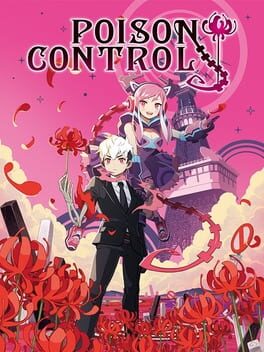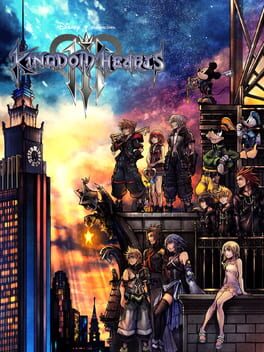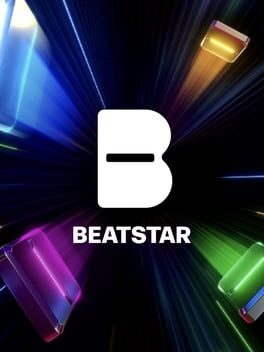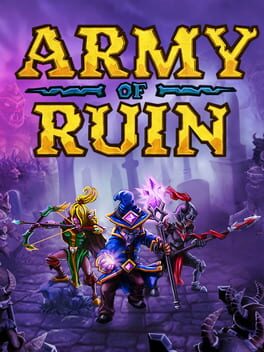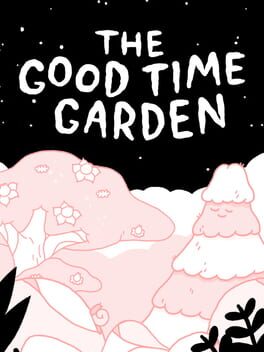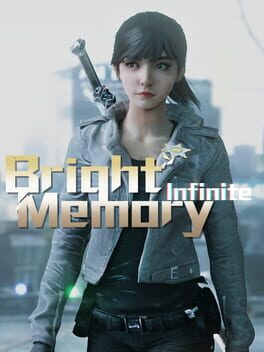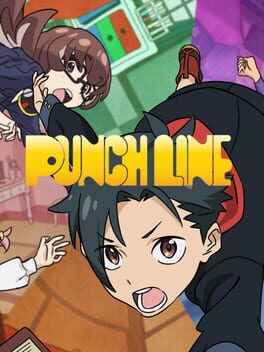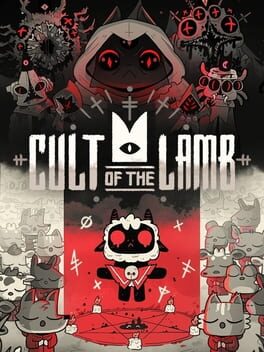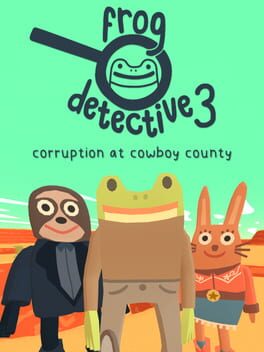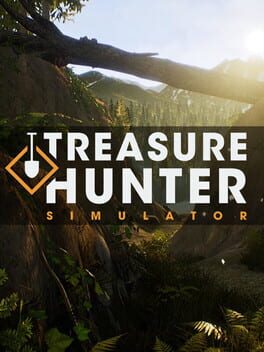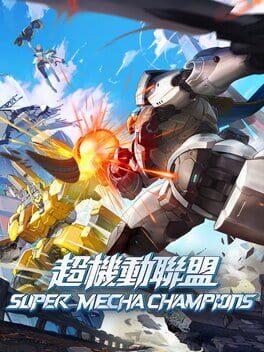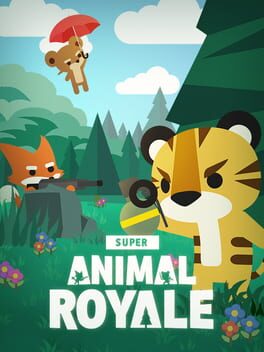Goslopo
BACKER
2021
Poison Control is significantly better than it has any right to be honestly.
I believe its saving grace is that it's a B game that wholly recognizes that it's a B game. The world designs are simple but streamlined, the music is unique and fun, and the UI is downright gorgeous. The combat is extremely bare bones, but exists primarily as a way to guide the characters and story, arguably the most well executed elements of the game, forward.
Don't start Poison Control expecting some grand, over-the-top experience. It should be treated as a simple, connected anthology of short stories and unique characters.
I would have given the game 4 stars, but unfortunately I encountered a game breaking bug. I presume this may have something to do with the loading being improved on PS5, but I'll revisit the game on PS4 when I have time.
I believe its saving grace is that it's a B game that wholly recognizes that it's a B game. The world designs are simple but streamlined, the music is unique and fun, and the UI is downright gorgeous. The combat is extremely bare bones, but exists primarily as a way to guide the characters and story, arguably the most well executed elements of the game, forward.
Don't start Poison Control expecting some grand, over-the-top experience. It should be treated as a simple, connected anthology of short stories and unique characters.
I would have given the game 4 stars, but unfortunately I encountered a game breaking bug. I presume this may have something to do with the loading being improved on PS5, but I'll revisit the game on PS4 when I have time.
2019
Kingdom Hearts III is a lighthearted, ambitious game that aimed to be the best of 2019, but resulted in a fun and satisfying experience. It sits atop the series as one of the best entries so far and is a guaranteed must-play for Kingdom Hearts fans and a highly recommended game for those interested in action games.
Just a foreword, I will be doing my best to compare this game to both prior Kingdom Hearts games as well as other action games of 2017, 2018, and 2019.
Controls
The movement in Kingdom Hearts has generally been a clean and well-handled part of the series, especially compared to other games in the genre. I would say that, overall, Kingdom Hearts III maintains that tradition. There are a few minor kinks in the ground traversal including odd, analog-like movement when rotating and moving in short bursts, but this is a small and infrequent issue. In past games, the worlds have been small enough to not worry too much about navigating large, vertical distances, but with the implementation of much larger maps, the corresponding addition of free running is an extremely fun and satisfying way to traverse the worlds. Combined with gliding and Flowmotion (https://www.androidcentral.com/how-use-flow-motion-kingdom-hearts-3), the movement adapts to the new environments very smoothly. The user interface navigation has also been improved greatly from previous games to Kingdom Hearts III. My only question is, why isn’t there an overview map for a given world, or at least something larger than the existing one?
Easily toggleable command shortcut sets, the ability to jump between multiple weapons, and obvious, simple indicators for prompts make menus easy to control both in and out of combat.
Gameplay
Prior to the release of Kingdom Hearts III, I had seen quite a few reports of dedicated fans being quite a bit disappointed in the combat. However, I’m happy to say that the combat feels just as good as, or even better than, previous Kingdom Hearts in most ways. The addition of Flowmotion doesn’t greatly affect the moment to moment combat as it seems better suited for standard movement. Luckily, the addition of Attractions and per-weapon Formchanges does. These additions remove much of the tedium that may have existed in this game due to the laughable difficulty (more on this below) and replaced it with fun combat mini-games. Often the balance of these additions requires more tweaking, but they’re all still quite fun to use in a myriad of combinations. What makes the combat of Kingdom Hearts III memorable is the sheer amount of creativity put into every aspect of it.
After playing the game for myself, it seems like the dedicated fans that were worried about the combat prior to launch were most likely concerned about the perceived lack of depth in the combat system rather than the actual system itself. This perceived lack of depth is more tied to the sheer, unadulterated lack of skill required to play this game than it is the actual combat. On normal mode, the player can get through multiple boss fights by just mashing on the attack key and on proud mode, the player doesn’t even have to use any items. This lack of difficulty led me to not care about the way I played the game in any way. I could equip whatever keyblade whenever I wanted, I could use whatever magic whenever I wanted, and I could use whatever combos whenever I wanted. There is no reason to try and optimize the way you play because it’s harder to lose than it is to win battles.
The progression in Kingdom Hearts III feels greatly deepened compared to previous entries in the series, but average in terms of other, similar action games. Gummi ship’s have been reworked from the ground up, including a brand-new progression system that feels nicely balanced with the overall pace of the rest of the game. The addition of upgrades for keyblades is also a nice touch. This leads to the player not feeling like they must use a given weapon just because another one, that may not be as fun to use, is inherently better. Finally, the game maintains its ability system, allowing the player to slot in whichever abilities they want for a given scenario.
Sound
I’m generally not a fan of orchestral pieces in games, even if they do lead to a more timeless experience, and Kingdom Hearts 3 doesn’t necessarily change that. In cutscenes and battles, the music is very fitting with the mood and seems to be balanced nicely with the rest of the audio, acting as a nice support for the voice acting rather than a cover. This entry’s theme songs are fun and fitting with the running theme of both cheesy, yet powerful when placed alongside the game. Also, I’m now convinced Skrillex can collaborate with literally anyone and it will turn out well.
On a different note, the voice acting is by far the best its been in the series’ history. Every member of Organization XIII now feels like an actual character with a personality rather than just gruffy-angry-person-wearing-black-coat. All the characters from the Disney IPs feel well done and nothing feels out of the ordinary or like it doesn’t belong in the game. I honestly can’t give enough credit to the voice acting, it was the only thing that managed to keep me interested during the hundreds of cutscenes.
Art
Back in 2014, Square Enix made the decision to move from Luminous Studio to Unreal Engine 4 and it seem like this move turned out fantastically for the game. Everything to do with the engine is amazing: the particle effects, the cutscene cinematography, the world design, the physics. Honestly, everything but the water blew me away. More specifically, every attack is flashy and fun (especially the attractions). The worlds are expansive, but never felt too empty. The cutscenes always flowed naturally, especially when transitioning back into gameplay. The addition of genuine physics made this game feel more dynamic and when combined with the movement systems, extremely fun and rewarding.
Every character in the game looks beautifully rendered and fit wonderfully with their world. Much of the time, I couldn’t tell whether the game was using a cutscene from the movie, like with the Frozen and Tangled worlds, or if it was a pre-rendered from the game. I’m just happy they never attempted to go for a more realistic portrayal of characters other than Goofy and Donald, otherwise we may have ended up with another Detective Pikachu situation (https://c1.staticflickr.com/5/4844/44938071055_87286d563b_b.jpg).
Story
The plot is where Kingdom Hearts III really begins to fall short. The game could have been so much more if it wasn’t held down by all its predecessors. What I mean by this, is that the Kingdom Hearts series has had a constant barrage of plot points all being introduced one game after another. Many of these points were left open at the end of their given game to expand on later. Game after game, the plot got more convoluted and less attractive for newcomers to the series. Kingdom Hearts III attempts remind the player of, as well as wrap up, virtually all these plot points over the duration of the game. At this point, if you don’t have a Masters in the study of Kingdom Hearts plotlines, you most likely won’t know what’s happening at any given point in the game. This is why I strongly recommend this game to fans of Kingdom Hearts and only half-heartedly recommend this game to newcomers or fans of other action games.
Footnote
I also appreciate the “integration” of Kingdom Hearts Union X into Kingdom Hearts III. As someone who has dedicated countless hours to that game and greatly appreciates the community, it was heartwarming to see that Square Enix views it as a full part of the series and recognizes that the game matters. So, thank you to Square Enix for dedicating so much to Kingdom Hearts III and maintaining faith in single player games and thank you to the Kingdom Hearts community for sticking with the series through all its trials and tribulations.
Note: Review originally written Feb 3, 2019
Just a foreword, I will be doing my best to compare this game to both prior Kingdom Hearts games as well as other action games of 2017, 2018, and 2019.
Controls
The movement in Kingdom Hearts has generally been a clean and well-handled part of the series, especially compared to other games in the genre. I would say that, overall, Kingdom Hearts III maintains that tradition. There are a few minor kinks in the ground traversal including odd, analog-like movement when rotating and moving in short bursts, but this is a small and infrequent issue. In past games, the worlds have been small enough to not worry too much about navigating large, vertical distances, but with the implementation of much larger maps, the corresponding addition of free running is an extremely fun and satisfying way to traverse the worlds. Combined with gliding and Flowmotion (https://www.androidcentral.com/how-use-flow-motion-kingdom-hearts-3), the movement adapts to the new environments very smoothly. The user interface navigation has also been improved greatly from previous games to Kingdom Hearts III. My only question is, why isn’t there an overview map for a given world, or at least something larger than the existing one?
Easily toggleable command shortcut sets, the ability to jump between multiple weapons, and obvious, simple indicators for prompts make menus easy to control both in and out of combat.
Gameplay
Prior to the release of Kingdom Hearts III, I had seen quite a few reports of dedicated fans being quite a bit disappointed in the combat. However, I’m happy to say that the combat feels just as good as, or even better than, previous Kingdom Hearts in most ways. The addition of Flowmotion doesn’t greatly affect the moment to moment combat as it seems better suited for standard movement. Luckily, the addition of Attractions and per-weapon Formchanges does. These additions remove much of the tedium that may have existed in this game due to the laughable difficulty (more on this below) and replaced it with fun combat mini-games. Often the balance of these additions requires more tweaking, but they’re all still quite fun to use in a myriad of combinations. What makes the combat of Kingdom Hearts III memorable is the sheer amount of creativity put into every aspect of it.
After playing the game for myself, it seems like the dedicated fans that were worried about the combat prior to launch were most likely concerned about the perceived lack of depth in the combat system rather than the actual system itself. This perceived lack of depth is more tied to the sheer, unadulterated lack of skill required to play this game than it is the actual combat. On normal mode, the player can get through multiple boss fights by just mashing on the attack key and on proud mode, the player doesn’t even have to use any items. This lack of difficulty led me to not care about the way I played the game in any way. I could equip whatever keyblade whenever I wanted, I could use whatever magic whenever I wanted, and I could use whatever combos whenever I wanted. There is no reason to try and optimize the way you play because it’s harder to lose than it is to win battles.
The progression in Kingdom Hearts III feels greatly deepened compared to previous entries in the series, but average in terms of other, similar action games. Gummi ship’s have been reworked from the ground up, including a brand-new progression system that feels nicely balanced with the overall pace of the rest of the game. The addition of upgrades for keyblades is also a nice touch. This leads to the player not feeling like they must use a given weapon just because another one, that may not be as fun to use, is inherently better. Finally, the game maintains its ability system, allowing the player to slot in whichever abilities they want for a given scenario.
Sound
I’m generally not a fan of orchestral pieces in games, even if they do lead to a more timeless experience, and Kingdom Hearts 3 doesn’t necessarily change that. In cutscenes and battles, the music is very fitting with the mood and seems to be balanced nicely with the rest of the audio, acting as a nice support for the voice acting rather than a cover. This entry’s theme songs are fun and fitting with the running theme of both cheesy, yet powerful when placed alongside the game. Also, I’m now convinced Skrillex can collaborate with literally anyone and it will turn out well.
On a different note, the voice acting is by far the best its been in the series’ history. Every member of Organization XIII now feels like an actual character with a personality rather than just gruffy-angry-person-wearing-black-coat. All the characters from the Disney IPs feel well done and nothing feels out of the ordinary or like it doesn’t belong in the game. I honestly can’t give enough credit to the voice acting, it was the only thing that managed to keep me interested during the hundreds of cutscenes.
Art
Back in 2014, Square Enix made the decision to move from Luminous Studio to Unreal Engine 4 and it seem like this move turned out fantastically for the game. Everything to do with the engine is amazing: the particle effects, the cutscene cinematography, the world design, the physics. Honestly, everything but the water blew me away. More specifically, every attack is flashy and fun (especially the attractions). The worlds are expansive, but never felt too empty. The cutscenes always flowed naturally, especially when transitioning back into gameplay. The addition of genuine physics made this game feel more dynamic and when combined with the movement systems, extremely fun and rewarding.
Every character in the game looks beautifully rendered and fit wonderfully with their world. Much of the time, I couldn’t tell whether the game was using a cutscene from the movie, like with the Frozen and Tangled worlds, or if it was a pre-rendered from the game. I’m just happy they never attempted to go for a more realistic portrayal of characters other than Goofy and Donald, otherwise we may have ended up with another Detective Pikachu situation (https://c1.staticflickr.com/5/4844/44938071055_87286d563b_b.jpg).
Story
The plot is where Kingdom Hearts III really begins to fall short. The game could have been so much more if it wasn’t held down by all its predecessors. What I mean by this, is that the Kingdom Hearts series has had a constant barrage of plot points all being introduced one game after another. Many of these points were left open at the end of their given game to expand on later. Game after game, the plot got more convoluted and less attractive for newcomers to the series. Kingdom Hearts III attempts remind the player of, as well as wrap up, virtually all these plot points over the duration of the game. At this point, if you don’t have a Masters in the study of Kingdom Hearts plotlines, you most likely won’t know what’s happening at any given point in the game. This is why I strongly recommend this game to fans of Kingdom Hearts and only half-heartedly recommend this game to newcomers or fans of other action games.
Footnote
I also appreciate the “integration” of Kingdom Hearts Union X into Kingdom Hearts III. As someone who has dedicated countless hours to that game and greatly appreciates the community, it was heartwarming to see that Square Enix views it as a full part of the series and recognizes that the game matters. So, thank you to Square Enix for dedicating so much to Kingdom Hearts III and maintaining faith in single player games and thank you to the Kingdom Hearts community for sticking with the series through all its trials and tribulations.
Note: Review originally written Feb 3, 2019
2020
2022
Army of Ruin is a shining example of why it's important to have a specific, unique game direction in mind, and stick to that style through development.
Through the entire game, from the UI, to the weapons, to the enemies: every element feels generic. While the gameplay is solid and nearly bug free, I felt nearly no excitement or passion during my near 50 hours with Army of Ruin. There's content galore, but it's all either generic, ripped from other games, or felt extremely out of place. The challenges are arbitrary and the maps are largely empty. If you want a quality Survivor-like game on Playstation console, wait for other games with more intention behind their design to arrive and don't waste your time here.
Through the entire game, from the UI, to the weapons, to the enemies: every element feels generic. While the gameplay is solid and nearly bug free, I felt nearly no excitement or passion during my near 50 hours with Army of Ruin. There's content galore, but it's all either generic, ripped from other games, or felt extremely out of place. The challenges are arbitrary and the maps are largely empty. If you want a quality Survivor-like game on Playstation console, wait for other games with more intention behind their design to arrive and don't waste your time here.
2019
The devs don't joke when they call this experience surreal. Honestly it's hard to justify a full review for this game at it's ~15 minute length. So all that I'll say is, go try it out.
Positive points
From the music to the animations, the artistic side of this project is nailed down perfectly
Negative points
If you're going to have an odd control scheme, please explain what keys the controls are mapped to
Note: Review originally written in 2020
Positive points
From the music to the animations, the artistic side of this project is nailed down perfectly
Negative points
If you're going to have an odd control scheme, please explain what keys the controls are mapped to
Note: Review originally written in 2020
A very small game made by a single developer with extremely high standards, Bright Memory: Infinite does a wonderful job of providing the player with a fun and fast paced FPS/Hack & Slash experience.
The story is very short, only containing a handful of missions and a few repeated bosses. However, the gameplay, gorgeous world design, and relatively low price make up for the length. The weapons feel punchy, the movement feels smooth, the game is relatively bug free (apart from one or 2 freezes across my 4 hours of playtime, of which no time was lost due to generous checkpointing).
You can tell the developer genuinely cares about the quality and consistency of the product he put out. This resulted in a fun and worthwhile experience, fully completable in just a few hours.
The story is very short, only containing a handful of missions and a few repeated bosses. However, the gameplay, gorgeous world design, and relatively low price make up for the length. The weapons feel punchy, the movement feels smooth, the game is relatively bug free (apart from one or 2 freezes across my 4 hours of playtime, of which no time was lost due to generous checkpointing).
You can tell the developer genuinely cares about the quality and consistency of the product he put out. This resulted in a fun and worthwhile experience, fully completable in just a few hours.
2016
Punchline is a bland, boring, and forgettable visual novel/point-and-click hybrid that aims to emulate its anime counterpart, but fails in every possible way.
Controls
Ok, so the controls themselves weren't too bad, X to skip movies, R1 to fast forward, and Square to auto-play text. The issue that I had here is that they never tell you this once you begin the game. The only way to find this information is by checking the config menu. This could just be a case of me being a bit stupid and not checking there first, but it seems like something they should be telling the player in the first place.
Gameplay
The idea for the game was pretty good, create a visual novel for the story aspects and mix it with a point-and-click game when it comes to the moment to moment gameplay. Unfortunately, in execution the ball is dropped completely. The visual novel sections pale in comparison to the anime and the art choice they use fail to convey any sense of emotion or life. The point-and-click sections aren't as bad, but due to story restrictions, just stop halfway through the game. Leading the player to have to deal with the terrible visual novel and nothing else for the second half of the game.
Sound
The music is fine. Its forgettable and annoying at points (i.e. the "joke" songs), but fine. It matches the tone of the game nicely, and never felt repetitive or out of place. The voice acting is also acceptable, but never really excels.
Art
This and the story are what really made me hate this game. Imagine the models from Zero Escape: Zero Time Dilemma, but with a terrible plot, bad character development, and no emotion behind the voice acting. Also, the animation was done by a 12-year-old. The environments are rather nice and fun to look around, but are never really used effectively. Punchline also strips a ton of footage from the anime, and I mean A TON. Every single chapter you have to watch an opening and closing (the same opening and closing every time to be exact) where most of it is just pulled from the anime. Probably a quarter to a third of the game's cutscenes are just ripped straight from the anime, but for some reason many of the shots are just still shots from the anime. They just stand still and narrate over them. Sometimes they move the mouths, but keep everything else completely static. The choices made in this game confuse me to no end.
Story
Just watch the anime.
Note: Review originally written March 3, 2019
Controls
Ok, so the controls themselves weren't too bad, X to skip movies, R1 to fast forward, and Square to auto-play text. The issue that I had here is that they never tell you this once you begin the game. The only way to find this information is by checking the config menu. This could just be a case of me being a bit stupid and not checking there first, but it seems like something they should be telling the player in the first place.
Gameplay
The idea for the game was pretty good, create a visual novel for the story aspects and mix it with a point-and-click game when it comes to the moment to moment gameplay. Unfortunately, in execution the ball is dropped completely. The visual novel sections pale in comparison to the anime and the art choice they use fail to convey any sense of emotion or life. The point-and-click sections aren't as bad, but due to story restrictions, just stop halfway through the game. Leading the player to have to deal with the terrible visual novel and nothing else for the second half of the game.
Sound
The music is fine. Its forgettable and annoying at points (i.e. the "joke" songs), but fine. It matches the tone of the game nicely, and never felt repetitive or out of place. The voice acting is also acceptable, but never really excels.
Art
This and the story are what really made me hate this game. Imagine the models from Zero Escape: Zero Time Dilemma, but with a terrible plot, bad character development, and no emotion behind the voice acting. Also, the animation was done by a 12-year-old. The environments are rather nice and fun to look around, but are never really used effectively. Punchline also strips a ton of footage from the anime, and I mean A TON. Every single chapter you have to watch an opening and closing (the same opening and closing every time to be exact) where most of it is just pulled from the anime. Probably a quarter to a third of the game's cutscenes are just ripped straight from the anime, but for some reason many of the shots are just still shots from the anime. They just stand still and narrate over them. Sometimes they move the mouths, but keep everything else completely static. The choices made in this game confuse me to no end.
Story
Just watch the anime.
Note: Review originally written March 3, 2019
2022
A wonderful little game soured by myriad of bugs, Cult of the Lamb balances a basic settlement simulator with a simple rogue-lite experience.
The game will bounce the player back and forth between scouring for new followers in the dungeon, helping cultists in their base, and exploring new locations around the world. Overall the dungeon crawling is barebones and really only engaging for the first few runs, especially considering the limited difficulty. However, meeting new cultists, managing the small settlement, and coming across new individuals around the world helps to add significantly more depth to the game.
I primarily played the Cult of the Lamb around launch, so it may have improved in some aspects, but as it stands the number of bugs lowered a 9/10 score down to a 7/10 for me. Overall worth a play, but probably not 100% completion.
The game will bounce the player back and forth between scouring for new followers in the dungeon, helping cultists in their base, and exploring new locations around the world. Overall the dungeon crawling is barebones and really only engaging for the first few runs, especially considering the limited difficulty. However, meeting new cultists, managing the small settlement, and coming across new individuals around the world helps to add significantly more depth to the game.
I primarily played the Cult of the Lamb around launch, so it may have improved in some aspects, but as it stands the number of bugs lowered a 9/10 score down to a 7/10 for me. Overall worth a play, but probably not 100% completion.
While I overall had a positive experience with this game and would recommend it to someone for the right price (I bought it at around $5 USD), it eventually falls into crippling tedium.
The game is extremely relaxing and has a myriad of beautiful set pieces, environments, and music. It's developed with virtually no outstanding bugs and a series of controls that feel natural and responsive. In terms of technical ability, the team nails almost every aspect. However, this high can only be ridden for so long.
Once you get to the later stages of the story mode, you'll find that the game never actually evolves from the aspects it introduces initially. The novelty of finding, digging up, and inspecting an item grows old once you've done it ~300 times in a row. If they would have introduced some sort of gimmick or external factor that applies to the later game, maybe my opinion wouldn't have soured prior to the end, but it seems like the team developed a fair gameplay loop and leaned on it until it eventually snapped.
All in all, I had a good time destroying monuments internationally to salvage priceless items that I pawn off for pennies on the dollar. Just don't expect to feel the same way for 10 hours straight.
Note: Review originally written in 2021
The game is extremely relaxing and has a myriad of beautiful set pieces, environments, and music. It's developed with virtually no outstanding bugs and a series of controls that feel natural and responsive. In terms of technical ability, the team nails almost every aspect. However, this high can only be ridden for so long.
Once you get to the later stages of the story mode, you'll find that the game never actually evolves from the aspects it introduces initially. The novelty of finding, digging up, and inspecting an item grows old once you've done it ~300 times in a row. If they would have introduced some sort of gimmick or external factor that applies to the later game, maybe my opinion wouldn't have soured prior to the end, but it seems like the team developed a fair gameplay loop and leaned on it until it eventually snapped.
All in all, I had a good time destroying monuments internationally to salvage priceless items that I pawn off for pennies on the dollar. Just don't expect to feel the same way for 10 hours straight.
Note: Review originally written in 2021
2016
Rusty Lake: Roots is a simple, yet engaging point and click puzzle game focused on the Vanderboom family and their lives on the shore of Rusty Lake.
Controls
As a point and click adventure, the controls are fairly simple: you point and you click. Other than that, actions feel responsive and interactions with the world don't generally feel like they last too long or move too quickly.
Gameplay
Rusty Lake: Roots focuses on maintaining a simple core mechanic of combining one or two items together to create something new, then using that item in a series of complex puzzles. Due to the vast amount of puzzles available and the relatively short length of the game, the gameplay never really feels like it gets stale at any points.
Sound
Overall, the music wasn't bad, but also wasn't anything amazing. It always fit the tone of the game appropriately and never felt too out of place. There were also a few moments where the music played very nicely into the gameplay and led to quite memorable moments, even if the music itself wasn't very memorable on its own. The voice acting was OK at best, often failing to match the dramatic tone of the game.
Art
The art of the Rusty Lake series continues to astound me from game to game and nothing about that changes in Rusty Lake: Roots. The only part that annoys me personally was the film grain-esque filter applied over all the gameplay. It aims to help to match the overall tone of the game, but ends up feeling like more of a distraction than an actual improvement.
Story
I've always been a fan of providing a story piecemeal to a player rather than in one long series and this game plays very nicely into that strategy. The overall story is relatively short, making it easy to keep straight when the pieces start being revealed. The actual story itself isn't terrible throughout, with an ending that feels fair, albeit a bit lackluster.
Note: Review originally written Feb 8, 2019
Controls
As a point and click adventure, the controls are fairly simple: you point and you click. Other than that, actions feel responsive and interactions with the world don't generally feel like they last too long or move too quickly.
Gameplay
Rusty Lake: Roots focuses on maintaining a simple core mechanic of combining one or two items together to create something new, then using that item in a series of complex puzzles. Due to the vast amount of puzzles available and the relatively short length of the game, the gameplay never really feels like it gets stale at any points.
Sound
Overall, the music wasn't bad, but also wasn't anything amazing. It always fit the tone of the game appropriately and never felt too out of place. There were also a few moments where the music played very nicely into the gameplay and led to quite memorable moments, even if the music itself wasn't very memorable on its own. The voice acting was OK at best, often failing to match the dramatic tone of the game.
Art
The art of the Rusty Lake series continues to astound me from game to game and nothing about that changes in Rusty Lake: Roots. The only part that annoys me personally was the film grain-esque filter applied over all the gameplay. It aims to help to match the overall tone of the game, but ends up feeling like more of a distraction than an actual improvement.
Story
I've always been a fan of providing a story piecemeal to a player rather than in one long series and this game plays very nicely into that strategy. The overall story is relatively short, making it easy to keep straight when the pieces start being revealed. The actual story itself isn't terrible throughout, with an ending that feels fair, albeit a bit lackluster.
Note: Review originally written Feb 8, 2019
2018
Turn It On! is a simple puzzle game that excels in most of its presentation, but falls flat in virtually every other category. At $0.99 or $0.00, it may be worth the 45 minutes required to complete the game, but at $1.99 there are better options available.
Foreword: I was kindly provided the code for this game directly from the developers over Twitter in exchange for a review and feedback.
Story:
There isn't really any story in Turn It On!, nor any sort of driving force to lead the player between the levels. There is a small animation of a spaceship preparing to lift off that doesn't seem to be related to anything in the game, but other than that there's nothing.
Gameplay:
The gameplay is that of a standard blackbox puzzle game where you have to figure out how to activate the specific device you are interacting with. Unfortunately, in Turn It On! all of these puzzles are either way too easy or lead the player to guess for the answer. If the puzzles were more engaging, the game may be worth more the time and money, but as it stands there really is no feeling of accomplishment or satisfaction from finishing any of the puzzles. Overall, the gameplay feels lackluster and boring.
Art:
Turn It On's! art is fairly nice. Nothing particularly stands out, but the puzzles are well modeled and the worlds are inoffensive. The major issue with the game's art style is that there's no story to base the art style off of, leading to a disconnected and inconsistent style. Luckily, the menus are simple and easy to understand.
Controls:
The controls are simple and easy to understand. They seem based off of other examples of manipulating a static object in a 3D environment on a mobile device, and are well replicated. The only issue with the games controls is when there are things to manipulate on the side of the object, where the controls become unreliable.
Sound:
The music in Turn It On! is simple and forgettable. None of it is particularly bad, it just falls flat due to the lack of an overall theme and story to build off of and work with. Luckily, the sound effects are well done and respond nicely to player input.
Note: Review originally written in 2019
Foreword: I was kindly provided the code for this game directly from the developers over Twitter in exchange for a review and feedback.
Story:
There isn't really any story in Turn It On!, nor any sort of driving force to lead the player between the levels. There is a small animation of a spaceship preparing to lift off that doesn't seem to be related to anything in the game, but other than that there's nothing.
Gameplay:
The gameplay is that of a standard blackbox puzzle game where you have to figure out how to activate the specific device you are interacting with. Unfortunately, in Turn It On! all of these puzzles are either way too easy or lead the player to guess for the answer. If the puzzles were more engaging, the game may be worth more the time and money, but as it stands there really is no feeling of accomplishment or satisfaction from finishing any of the puzzles. Overall, the gameplay feels lackluster and boring.
Art:
Turn It On's! art is fairly nice. Nothing particularly stands out, but the puzzles are well modeled and the worlds are inoffensive. The major issue with the game's art style is that there's no story to base the art style off of, leading to a disconnected and inconsistent style. Luckily, the menus are simple and easy to understand.
Controls:
The controls are simple and easy to understand. They seem based off of other examples of manipulating a static object in a 3D environment on a mobile device, and are well replicated. The only issue with the games controls is when there are things to manipulate on the side of the object, where the controls become unreliable.
Sound:
The music in Turn It On! is simple and forgettable. None of it is particularly bad, it just falls flat due to the lack of an overall theme and story to build off of and work with. Luckily, the sound effects are well done and respond nicely to player input.
Note: Review originally written in 2019
2018
Overall, it's fine for a free game, but with significantly better alternatives available there's not much of a reason to put time into this one.
Unreliable servers
Poorly conveyed mechanics
Not much but the main mode
Little to no beginner introduction
Frequent teaming in solo game modes
Seemingly rips off the Animal Super Squad namespace/aesthetic to benefit SEO?
Unreliable servers
Poorly conveyed mechanics
Not much but the main mode
Little to no beginner introduction
Frequent teaming in solo game modes
Seemingly rips off the Animal Super Squad namespace/aesthetic to benefit SEO?
